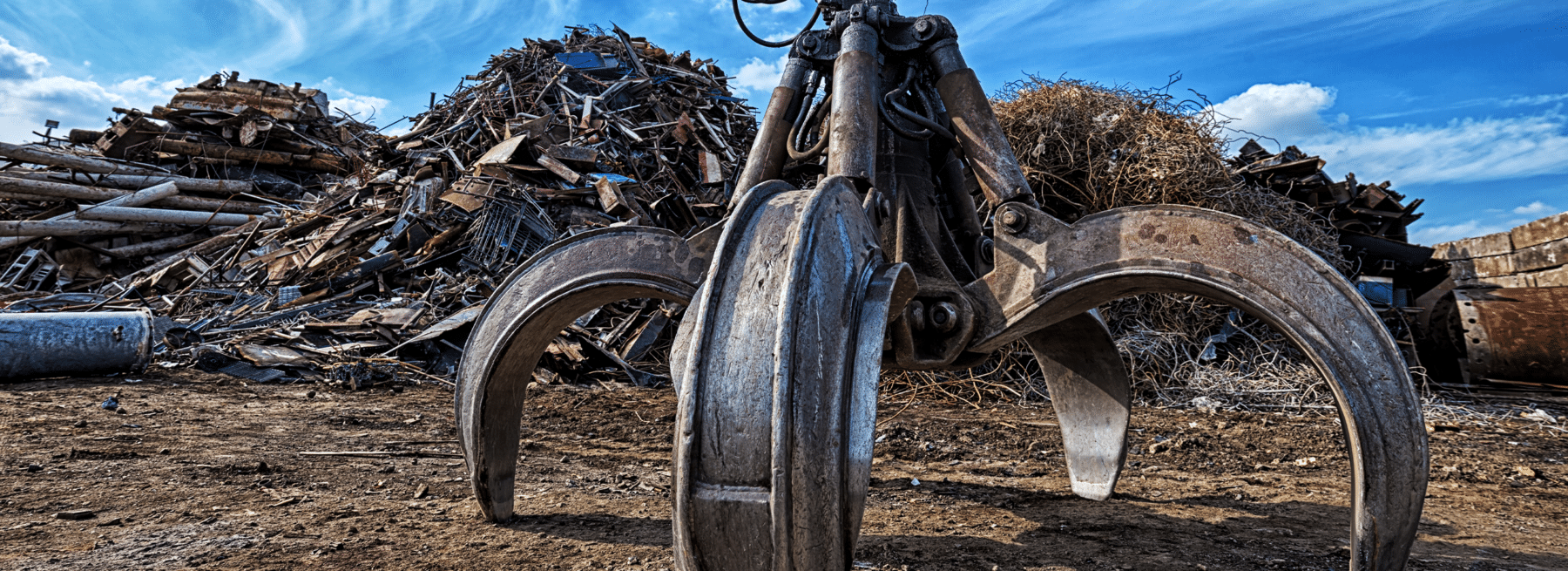Scrap yards need to be concerned about catalytic converter thefts. It became such a problem that local lawmakers created laws to curb the thefts. To help fight it, the Winnipeg police established Project Precious. This was a four-month investigation into the catalytic converter thefts that led to arrests at a scrap yard. At the scrap yard, the police arrested two individuals who traded large quantities of the stolen catalytic converters.
Additionally, Winnipeg lawmakers created the Scrap Metal Act that went into effect this year according to the Winnipeg Free Press. The provincial law targets the sales and purchase of catalytic converters.
It requires scrap yard businesses to photograph and document all catalytic converters they buy and send the documentation to the police every week. Scrap yards cannot pay more than $50 for a converter. Scrapyard employees don’t like the changes because they believe the added paperwork will not deter theft.
Lawmakers in many U.S. states have taken a similar approach to Winnipeg’s by adding laws that require more documentation with photos and videos. Some laws institute payment restrictions, such as no cash payments. Scrap yards may also need to ask the seller for a driver’s license and write down the seller’s vehicle information. Some states require fingerprints.
Why Is Scrap Yard Theft Happening?
It only takes one to two minutes for a professional thief to steal a catalytic converter from a vehicle. It’s a low-risk, high-reward business for them. There’s a black-market industry for scrap metal that’s making things difficult for scrap yard businesses.
Catalytic converters in vehicles contain precious metals such as gold, palladium, platinum, or rhodium. These metals are worth a lot of money. J.D. Power indicates the price of rhodium is anywhere from $10,000 to $21,000 per ounce. Car and Driver reports gold sells for $1,900 per ounce and palladium is worth approximately $2,300. The high resale values are triggering huge increases in catalytic converter theft.
Scrap yards accept converters because recycling catalytic converters for scrap yields good money. Scrap yards use a de-canning process to extract precious metals. Many businesses partner with dealerships, junk car companies, and others.
Scrap yards contend with thefts because of basic economics. When supply declines and demand soars, then prices go up. The more expensive the item, the more likely crooks will swipe it and resell it.
The National Insurance Crime Bureau states catalytic converter thefts have surged from a little more than 3,000 in 2019 to an astronomical 14,433 in 2020! Just the month of December 2020 had more than 2,000 thefts. This is more than half of the total of thefts in 2019. It exceeds the 1,300 thefts in 2018.
Another reason scrap yards deal with metal thefts is because of “pandemic, economic downturn, loss of juvenile outreach programs and public safety budgetary and resource limitations as contributing factors of the increase” as the Insurance Information Institute references NICB analysis.
Any kind of theft can have a devastating effect on a scrap yard business. Not only do intruders steal high-priced items, but they can also cause damage. Therefore, scrap yard security is crucial, and it requires rethinking because many rely on outdated or inefficient security protocols. They’re reactive, not proactive.
A Better Way to Do Scrap Yard Security
Most traditional scrap yard security solutions put employees in harm’s way or don’t stop thieves. For example, scrap yard security often includes electrical fences. All it takes is a pair of gloves and wire cutters to bypass it. If no one is checking the fence regularly, crooks can come and go as they please. Guns and guards — dogs or security guards — put your scrap yard at risk for liability issues.
The most critical thing to do is protect every asset in your scrap yard. The easiest, quickest, and most effective solution that can deliver a fast return on investment is video surveillance with remote monitoring. The best scrap yard security contains consists of layers. Remote video surveillance comes with multiple layers built in.
A video surveillance system with remote monitoring involves putting cameras in strategic locations around the scrap yard. The security cameras should appear visible for all to notice. This is one layer as the sight of cameras can scare off some intruders.
For brazen thieves who are determined to achieve their insidious goals, you’ll need another layer of someone watching the cameras. These trained monitoring operators are not in your scrap yard. They work in a location away from the yard and can take the right action because their lives are never at risk.
If you have a fence, then the security cameras can easily monitor for any damage or openings in them and report them to the scrap yard security team.
4 Benefits of Using Video Surveillance for Scrap Yard Security
Here are four ways remote video surveillance can help level up your scrap yard security.
1. Can protect expensive assets
The video cameras can watch over all entrances and exits and parking lots as well as the entire indoors and outdoors. Security cameras and video analytics constantly analyze your scrap yard, its assets, and its employees. You’ll gain peace of mind knowing that your scrap yard has eyes on it around-the-clock.
Often, the proactive security technology can get law enforcement onsite before the crooks get away. If they happen to escape, the high-definition cameras can save all the recordings and provide information to help the police identify people and vehicles to lead to an arrest.
2. Helps deter crime
As stated before, the combination of video analytics and trained monitoring operators turns video surveillance into proactive security. High-definition cameras help the trained monitoring operators clearly see what’s happening because the videos are crisp, not grainy.
Watching videos for hours on end is mind-numbing. Fortunately, the monitoring operators have support from video analytics. They help ease the monitor’s load by scanning the entire scrap yard through all the cameras for any one of its many pre-programmed scenarios. As soon as it finds a possible match, it notifies the on-call monitoring operator.
The operator acts based on the information and what they see on the cameras. This helps prevent false alarms, which cause a lot of problems for a scrap yard and first-responder resources.
How the trained monitoring operator responds depends on what’s happening on the scrap yard. If someone is on the property who does not belong there, then the monitoring operator can issue an audio warning over an on-site speaker. If the intruders don’t leave, then the operator can call the police and stay on the call until they arrive at the scrap yard.
While the police make their way to the scrap yard, the monitoring operator may use pan, tilt, and zoom (PTZ) cameras to track the suspects’ movements while informing the emergency operator of the intruders’ activity. All of their movements can be recorded and saved. You may have the evidence you need to share with the police and your insurance provider.
3. Works to keeps everyone safe
Managers and owners of the scrap yard are responsible for making sure everyone is safe when they’re on the property. Trained monitoring operators do more than watch for crime. They can report potential safety hazards.
If they see something risky on the property, they can contact the scrap yard. For example, you may store scraps in an unsafe area or in a location that may be easy to steal from. Video surveillance can help you determine the way to organize the property for maximum security and safety. For instance, maybe some expensive assets are located too close to the street or exit.
Thermal imaging cameras can also be used to help detect an increase in temperature that could signal a potential fire, which are all to common in scrap yards.
4. Can yield a quick ROI
The cost of stolen scraps surpasses the cost of video surveillance with monitoring. It’s also possible that installing video surveillance can lead to lowered insurance premiums. It shows your insurance provider that you’ve taken steps to reduce the risk of theft and property damage. As previously covered, it can increase the chances of deterring crime. This avoids the need to spend money on repairs and replacements.
In using a remote video surveillance service, you only pay for the hardware and the monthly surveillance fee. Some Stealth clients see an ROI within four months.
How to Find the Right Scrap Yard Security Service
As you search for a video security company, aim to choose vendors with scrap yard security experience. The scrap yard security your business needs are different from the needs of a construction site, office building, and other businesses.
You can check to see if the video cameras are high definition by asking the security vendor for videos of their cameras in action. Have a look at these scrap yard surveillance videos.
Stealth Monitoring’s consultants can design the right-sized solution that meets your security requirements and budget. They’ll listen carefully to you and propose a customized solution that delivers on your requirements.
Scrap yard businesses need to rethink their security to help ensure they can continue making a profit despite inflation. You’ll also be able to better protect your assets and employees. And finally, you may see a faster return on your investment when you choose Stealth. To learn more, pick up your copy of How to Protect Your Scrap Metal Facility Assets to Gain a Fast ROI or contact us.

